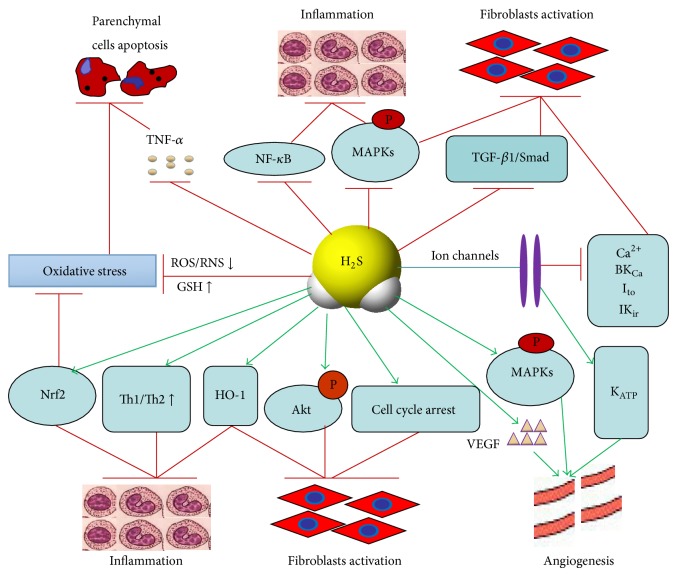Figure 1.
The main mechanisms of H2S-mediated protection against fibrosis development. H2S plays a complex role in the development of fibrosis. Besides as a reductant to directly scavenge oxygen free radicals, H2S exerts its inhibitory effect on fibrosis by anti-inflammation, selectively anti- or proapoptosis, proangiogenic effect, and suppression of fibroblasts activation. Many signaling pathways such as NF-κB, Akt, MAPKs, TGF-β1/Smad, and HO-1 and the activity of calcium and potassium channels are involved in the process of antifibrosis of H2S. The excitatory effects are denoted by the lines with arrow ends, and the inhibitory effects are indicated by the lines with bar ends. ROS/RNS: reactive oxygen and nitrogen species; GSH: glutathione; TNF-α: tumor necrosis factor-α; NF-κB: nuclear factor-kappa B; Akt: protein kinase B; MAPKs: mitogen-activated protein kinases; TGF-β1: transforming growth factor beta-1; Nrf2: nuclear factor E2-related factor; HO-1: heme oxygenase 1; VEGF: vascular endothelial growth factor; KATP: ATP-sensitive potassium channels.

